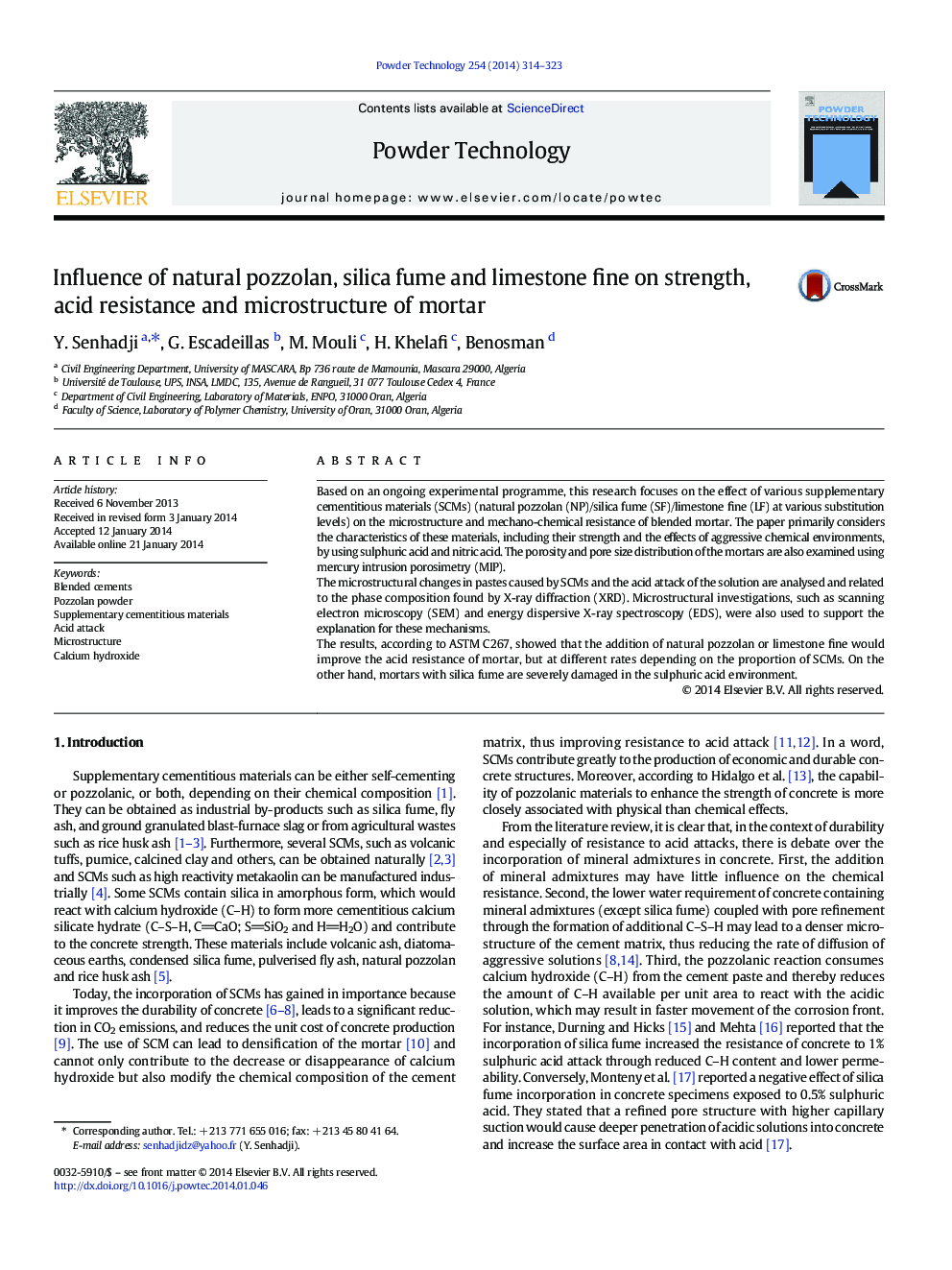| Article ID | Journal | Published Year | Pages | File Type |
|---|---|---|---|---|
| 236258 | Powder Technology | 2014 | 10 Pages |
•The feasibility of local SCMs as partial replacement of cement is studied.•NP and SF generally enhance the mechanical behavior of mortar at late curing ages.•NP and LF performed better than control mix against the acidic attacks.•The MIP indicated that OPC mixtures were more porous than mortar containing SCMs.•Microstructural analyses, such as XRD and SEM, were performed on mortar samples.
Based on an ongoing experimental programme, this research focuses on the effect of various supplementary cementitious materials (SCMs) (natural pozzolan (NP)/silica fume (SF)/limestone fine (LF) at various substitution levels) on the microstructure and mechano-chemical resistance of blended mortar. The paper primarily considers the characteristics of these materials, including their strength and the effects of aggressive chemical environments, by using sulphuric acid and nitric acid. The porosity and pore size distribution of the mortars are also examined using mercury intrusion porosimetry (MIP).The microstructural changes in pastes caused by SCMs and the acid attack of the solution are analysed and related to the phase composition found by X-ray diffraction (XRD). Microstructural investigations, such as scanning electron microscopy (SEM) and energy dispersive X-ray spectroscopy (EDS), were also used to support the explanation for these mechanisms.The results, according to ASTM C267, showed that the addition of natural pozzolan or limestone fine would improve the acid resistance of mortar, but at different rates depending on the proportion of SCMs. On the other hand, mortars with silica fume are severely damaged in the sulphuric acid environment.
Graphical abstractFigure optionsDownload full-size imageDownload as PowerPoint slide
